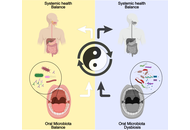
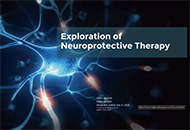
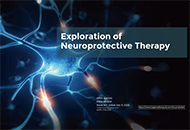
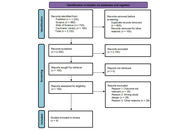
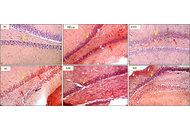
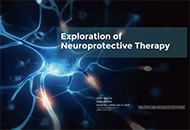
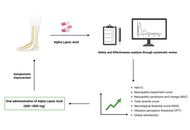



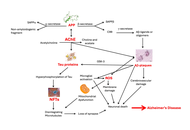
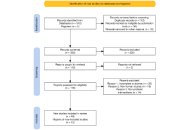

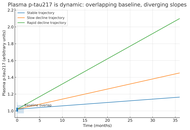

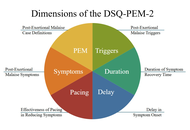
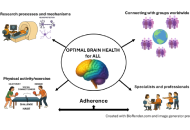
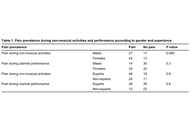
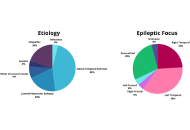
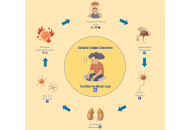

The oral microbiome has been increasingly implicated in the development and progression of neurological disorders. This narrative review synthesizes contemporary literature on alterations of oral microbial communities in Alzheimer’s disease, Parkinson’s disease, and migraine and evaluates their potential contribution to neuroinflammation and neurodegeneration. We first outline the core oral taxa that maintain microbial homeostasis and summarize evidence that patients with these neurological conditions exhibit dysbiosis characterized by reduced diversity and enrichment of periodontal pathogens. Proposed mechanisms include hematogenous or neural translocation of oral bacteria and their virulence factors, amplification of systemic inflammation, disruption of the blood-brain barrier, altered production of neuroactive metabolites, and bidirectional signaling along the ‘oral-gut-brain’ axis. On this mechanistic basis, microbiome-targeted strategies, particularly probiotics and fecal microbiota transplantation, have been explored as adjunctive approaches to restore microbial balance and potentially improve neurological outcomes, although available clinical data remain preliminary and heterogeneous. Current evidence is further limited by small samples, methodological variability in microbiome profiling, and a paucity of longitudinal and interventional studies, which hampers causal inference. Future research should adopt standardized sampling and multi-omic approaches and prioritize well-designed clinical trials to determine whether modulation of the oral microbiome can be translated into preventive or therapeutic strategies for neurological diseases.
The oral microbiome has been increasingly implicated in the development and progression of neurological disorders. This narrative review synthesizes contemporary literature on alterations of oral microbial communities in Alzheimer’s disease, Parkinson’s disease, and migraine and evaluates their potential contribution to neuroinflammation and neurodegeneration. We first outline the core oral taxa that maintain microbial homeostasis and summarize evidence that patients with these neurological conditions exhibit dysbiosis characterized by reduced diversity and enrichment of periodontal pathogens. Proposed mechanisms include hematogenous or neural translocation of oral bacteria and their virulence factors, amplification of systemic inflammation, disruption of the blood-brain barrier, altered production of neuroactive metabolites, and bidirectional signaling along the ‘oral-gut-brain’ axis. On this mechanistic basis, microbiome-targeted strategies, particularly probiotics and fecal microbiota transplantation, have been explored as adjunctive approaches to restore microbial balance and potentially improve neurological outcomes, although available clinical data remain preliminary and heterogeneous. Current evidence is further limited by small samples, methodological variability in microbiome profiling, and a paucity of longitudinal and interventional studies, which hampers causal inference. Future research should adopt standardized sampling and multi-omic approaches and prioritize well-designed clinical trials to determine whether modulation of the oral microbiome can be translated into preventive or therapeutic strategies for neurological diseases.
DOI: https://doi.org/10.37349/ent.2025.1004131
This article belongs to the special issue Role of Microbiota in Neurological Diseases

Apparent increases in autism and other forms of neurodivergence are often interpreted as a rise in incidence. Yet demographic expansion, diagnostic broadening, and growing cultural awareness all contribute to higher prevalence estimates. At the same time, contemporary sensory and digital environments have become increasingly overstimulating, characterized by persistent noise, visual saturation, hyperconnectivity, and unpredictable social rhythms. These conditions heighten sensory and cognitive load for many individuals, making neurodivergent traits more visible and increasing the urgency of diagnosis. Drawing on cognitive ecology, sensory neuroscience, and neuroaffirmative scholarship, this perspective proposes that neurodivergence can be understood as an adaptive response to environments that exceed nervous-system thresholds. Autistic regulatory behaviors—including withdrawal, shutdown, sensory avoidance, and monotropism-driven focus—may serve as mechanisms for maintaining coherence in overstimulating contexts. Interpreting neurodivergence as an ecological signal offers new pathways for public health, accessibility design, and social policy. It reframes autistic embodiment not as internal dysfunction but as meaningful information about the livability of contemporary environments.
Apparent increases in autism and other forms of neurodivergence are often interpreted as a rise in incidence. Yet demographic expansion, diagnostic broadening, and growing cultural awareness all contribute to higher prevalence estimates. At the same time, contemporary sensory and digital environments have become increasingly overstimulating, characterized by persistent noise, visual saturation, hyperconnectivity, and unpredictable social rhythms. These conditions heighten sensory and cognitive load for many individuals, making neurodivergent traits more visible and increasing the urgency of diagnosis. Drawing on cognitive ecology, sensory neuroscience, and neuroaffirmative scholarship, this perspective proposes that neurodivergence can be understood as an adaptive response to environments that exceed nervous-system thresholds. Autistic regulatory behaviors—including withdrawal, shutdown, sensory avoidance, and monotropism-driven focus—may serve as mechanisms for maintaining coherence in overstimulating contexts. Interpreting neurodivergence as an ecological signal offers new pathways for public health, accessibility design, and social policy. It reframes autistic embodiment not as internal dysfunction but as meaningful information about the livability of contemporary environments.
DOI: https://doi.org/10.37349/ent.2025.1004130

Parkinson’s disease (PD) is a progressive neurodegenerative disorder characterized by motor and non-motor symptoms, in which gut microbiota alterations have emerged as a potential pathogenic factor, causing disruption of the brain-gut-microbiota (BGM) axis. Recent evidence supports the role of BGM axis disruption in enhancing neuroinflammation, alpha-synuclein (α-syn) aggregation, and dopaminergic neurodegeneration. Emerging therapeutic strategies targeting dysbiosis, such as probiotics and fecal microbiota transplantation (FMT), have become a new focus of investigation for PD treatment. Proposed mechanisms include modulation of immune responses, enhancement of intestinal barrier integrity, production of neuroactive metabolites such as short-chain fatty acids, and reduction of oxidative stress. This narrative review summarizes current evidence on probiotics as a therapeutic strategy in PD. By analyzing data from randomized controlled trials and preclinical studies, we highlight the beneficial effects of probiotics in improving motor and non-motor symptoms of PD, including constipation, depression, and anxiety. Strains such as Lactobacillus plantarum PS128 and Bifidobacterium animalis Probio-M8 show particular promise. Although probiotics have demonstrated a favorable safety profile and potential as an adjunctive therapy for PD, future research should focus on standardized protocols, biomarker identification, and exploration of combined microbiota-targeted strategies.
Parkinson’s disease (PD) is a progressive neurodegenerative disorder characterized by motor and non-motor symptoms, in which gut microbiota alterations have emerged as a potential pathogenic factor, causing disruption of the brain-gut-microbiota (BGM) axis. Recent evidence supports the role of BGM axis disruption in enhancing neuroinflammation, alpha-synuclein (α-syn) aggregation, and dopaminergic neurodegeneration. Emerging therapeutic strategies targeting dysbiosis, such as probiotics and fecal microbiota transplantation (FMT), have become a new focus of investigation for PD treatment. Proposed mechanisms include modulation of immune responses, enhancement of intestinal barrier integrity, production of neuroactive metabolites such as short-chain fatty acids, and reduction of oxidative stress. This narrative review summarizes current evidence on probiotics as a therapeutic strategy in PD. By analyzing data from randomized controlled trials and preclinical studies, we highlight the beneficial effects of probiotics in improving motor and non-motor symptoms of PD, including constipation, depression, and anxiety. Strains such as Lactobacillus plantarum PS128 and Bifidobacterium animalis Probio-M8 show particular promise. Although probiotics have demonstrated a favorable safety profile and potential as an adjunctive therapy for PD, future research should focus on standardized protocols, biomarker identification, and exploration of combined microbiota-targeted strategies.
DOI: https://doi.org/10.37349/ent.2025.1004129
This article belongs to the special issue Role of Microbiota in Neurological Diseases

Background:
Ischemic stroke is a leading cause of disability, with calcium (Ca2+) dysregulation contributing to neuronal injury and impaired recovery. While early clinical trials targeting calcium signaling showed limited success, growing preclinical evidence supports the potential of calcium modulation for long-term neuroprotection. This systematic review evaluates the long-term effects of calcium modulation in animal models of ischemic stroke.
Methods:
A comprehensive search across PubMed, Scopus, Web of Science, and the Cochrane Library up to June 2025 identified studies investigating calcium-targeted interventions (e.g., calcium channel blockers, chelators, antioxidants) with ≥ 30 days of follow-up. Risk of bias was assessed using the Risk of Bias in Non-randomized Studies of Interventions (ROBINS-I).
Results:
Nine studies met the inclusion criteria. Interventions like L-type calcium channel blockers, magnesium sulfate, and ischemic preconditioning consistently reduced infarct volume (e.g., 22.4 ± 0.5% with preconditioning vs. 51.6 ± 2.1% with knockout) and improved neurobehavioral outcomes [e.g., epigallocatechin gallate (EGCG)-treated rats scored 2.17 ± 0.05 vs. 3.63 ± 0.06 in controls]. Molecular pathways involved included phosphoinositide 3-kinase (PI3K)/AKT, stromal interaction molecule 1 (STIM1)/ORAI1, and calcium-sensor proteins such as NCKX2.
Discussion:
Calcium modulation holds strong promise for neuroprotection in ischemic stroke models. Although clinical gaps remain, these findings support the development of calcium-targeted therapies for stroke recovery, especially when combined with multimodal strategies.
Background:
Ischemic stroke is a leading cause of disability, with calcium (Ca2+) dysregulation contributing to neuronal injury and impaired recovery. While early clinical trials targeting calcium signaling showed limited success, growing preclinical evidence supports the potential of calcium modulation for long-term neuroprotection. This systematic review evaluates the long-term effects of calcium modulation in animal models of ischemic stroke.
Methods:
A comprehensive search across PubMed, Scopus, Web of Science, and the Cochrane Library up to June 2025 identified studies investigating calcium-targeted interventions (e.g., calcium channel blockers, chelators, antioxidants) with ≥ 30 days of follow-up. Risk of bias was assessed using the Risk of Bias in Non-randomized Studies of Interventions (ROBINS-I).
Results:
Nine studies met the inclusion criteria. Interventions like L-type calcium channel blockers, magnesium sulfate, and ischemic preconditioning consistently reduced infarct volume (e.g., 22.4 ± 0.5% with preconditioning vs. 51.6 ± 2.1% with knockout) and improved neurobehavioral outcomes [e.g., epigallocatechin gallate (EGCG)-treated rats scored 2.17 ± 0.05 vs. 3.63 ± 0.06 in controls]. Molecular pathways involved included phosphoinositide 3-kinase (PI3K)/AKT, stromal interaction molecule 1 (STIM1)/ORAI1, and calcium-sensor proteins such as NCKX2.
Discussion:
Calcium modulation holds strong promise for neuroprotection in ischemic stroke models. Although clinical gaps remain, these findings support the development of calcium-targeted therapies for stroke recovery, especially when combined with multimodal strategies.
DOI: https://doi.org/10.37349/ent.2025.1004127
This article belongs to the special issue Therapeutic Targets for Neuroprotection in Ischemic Stroke

Aim:
Alzheimer’s disease (AD) devastates learning and memory, the defining faculties of the human species. Extracellular amyloid beta (Aβ) deposits and intracellular hyperphosphorylated tau are hallmarks of AD pathology. The exact cause of the disease remains unknown, but a lot of data support AD to be a multifactorial disease. Given the central roles of oxidative stress and neuroinflammation in AD pathogenesis, apocynin, a potent antioxidant and anti-inflammatory agent, was selected for investigation. Apocynin is an aromatic ketone, a naturally occurring methoxy-substituted catechol known to possess numerous biological activities, namely anti-oxidant, anti-inflammatory, etc. The present study assessed apocynin’s potential against an Aβ1–42-induced sporadic AD rat model.
Methods:
In the present study, Wistar rats were subjected to intrahippocampal administration of 200 µmol/L of Aβ1–42 peptide in right hemisphere. Further were treated with apocynin 50, 150, and 300 mg/kg per orally for 28 days. The study examined the neurobehavioral aspects using the Barnes Maze test (BMT). Hippocampus was examined for the antioxidant (SOD, GSH, catalase, and LPO), inflammatory (TNF-α) parameters, RAGE, caspase-3, PGC-1α expression, and IHC analysis for Aβ load, adult hippocampal neurogenesis markers (BDNF, Ki67, DCX, NeuN), at the end of 28 days.
Results:
Apocynin administration demonstrated significant improvement in cognitive functions, diminished oxidative stress and inflammatory response triggered by Aβ administration. Apocynin additionally instigated adult hippocampal neurogenesis and triggered mitochondrial biogenesis.
Conclusions:
These primary results strongly advocate apocynin’s nootropic, neurotrophic and neuroprotective potential in an Aβ induced neurotoxicity in rats.
Aim:
Alzheimer’s disease (AD) devastates learning and memory, the defining faculties of the human species. Extracellular amyloid beta (Aβ) deposits and intracellular hyperphosphorylated tau are hallmarks of AD pathology. The exact cause of the disease remains unknown, but a lot of data support AD to be a multifactorial disease. Given the central roles of oxidative stress and neuroinflammation in AD pathogenesis, apocynin, a potent antioxidant and anti-inflammatory agent, was selected for investigation. Apocynin is an aromatic ketone, a naturally occurring methoxy-substituted catechol known to possess numerous biological activities, namely anti-oxidant, anti-inflammatory, etc. The present study assessed apocynin’s potential against an Aβ1–42-induced sporadic AD rat model.
Methods:
In the present study, Wistar rats were subjected to intrahippocampal administration of 200 µmol/L of Aβ1–42 peptide in right hemisphere. Further were treated with apocynin 50, 150, and 300 mg/kg per orally for 28 days. The study examined the neurobehavioral aspects using the Barnes Maze test (BMT). Hippocampus was examined for the antioxidant (SOD, GSH, catalase, and LPO), inflammatory (TNF-α) parameters, RAGE, caspase-3, PGC-1α expression, and IHC analysis for Aβ load, adult hippocampal neurogenesis markers (BDNF, Ki67, DCX, NeuN), at the end of 28 days.
Results:
Apocynin administration demonstrated significant improvement in cognitive functions, diminished oxidative stress and inflammatory response triggered by Aβ administration. Apocynin additionally instigated adult hippocampal neurogenesis and triggered mitochondrial biogenesis.
Conclusions:
These primary results strongly advocate apocynin’s nootropic, neurotrophic and neuroprotective potential in an Aβ induced neurotoxicity in rats.
DOI: https://doi.org/10.37349/ent.2025.1004128
This article belongs to the special issue Natural Products in Neurotherapeutic Applications

Non-traumatic arterial dissection exhibits a propensity for the Asian population and predominantly affects the posterior circulation. Regrettably, during the initial fortnight prior to diagnosis, approximately one in thirty cervicocephalic artery dissections (CAD) are misdiagnosed. Overlooked CAD, more prevalent in the younger demographic, can result in severe complications such as ischemic stroke, subarachnoid hemorrhage, and possibly death. Comprehensive investigations are necessary to prevent overlooking such a diagnosis. Digital subtraction angiography (DSA) is universally acknowledged as the most efficacious technique for assessing luminal morphology and hemodynamics, but may miss the vessel wall characteristics, an important component for diagnosing dissection. Magnetic resonance angiography (MRA), conversely, is less invasive and can assess vessel wall properties. A high-resolution MRA with vascular wall imaging can efficiently identify conditions such as intimal flaps, double-lumen signs, intramural hematomas, mural thrombi, and pseudoaneurysms, aiding in the evaluation of suspected CAD. MRA with vascular wall imaging and DSA complement each other in the identification and characterization of cerebral artery dissections, both contributing to treatment. In cases of undefined stroke etiology, particularly among the young demographic, utilizing both tests (when one yields no significant findings) may assist in detecting overlooked instances of CAD. The prompt identification and treatment of CAD are essential, particularly for surgical intervention and to avert recurrence in predisposed patients. Identifying the etiology of a stroke or transient ischemic attack is important for providing precise therapy and preventing recurrence.
Non-traumatic arterial dissection exhibits a propensity for the Asian population and predominantly affects the posterior circulation. Regrettably, during the initial fortnight prior to diagnosis, approximately one in thirty cervicocephalic artery dissections (CAD) are misdiagnosed. Overlooked CAD, more prevalent in the younger demographic, can result in severe complications such as ischemic stroke, subarachnoid hemorrhage, and possibly death. Comprehensive investigations are necessary to prevent overlooking such a diagnosis. Digital subtraction angiography (DSA) is universally acknowledged as the most efficacious technique for assessing luminal morphology and hemodynamics, but may miss the vessel wall characteristics, an important component for diagnosing dissection. Magnetic resonance angiography (MRA), conversely, is less invasive and can assess vessel wall properties. A high-resolution MRA with vascular wall imaging can efficiently identify conditions such as intimal flaps, double-lumen signs, intramural hematomas, mural thrombi, and pseudoaneurysms, aiding in the evaluation of suspected CAD. MRA with vascular wall imaging and DSA complement each other in the identification and characterization of cerebral artery dissections, both contributing to treatment. In cases of undefined stroke etiology, particularly among the young demographic, utilizing both tests (when one yields no significant findings) may assist in detecting overlooked instances of CAD. The prompt identification and treatment of CAD are essential, particularly for surgical intervention and to avert recurrence in predisposed patients. Identifying the etiology of a stroke or transient ischemic attack is important for providing precise therapy and preventing recurrence.
DOI: https://doi.org/10.37349/ent.2025.1004126

Background:
This study aims to assess oral alpha lipoic acid’s (ALA’s) safety and effectiveness in managing diabetic neuropathy.
Methods:
A thorough search of the literature was conducted using PubMed, Google Scholar, and Embase databases, and the study was performed as per Preferred Reporting Items for Systematic Reviews and Meta-Analyses (PRISMA) guidelines.
Results:
Based on inclusion and exclusion criteria, nine randomized controlled trials (RCTs) comprising 1,345 subjects were selected. The results showed that ALA has shown significant reduction in glycated hemoglobin (HbA1C) [inverse variance (IV): –0.66, (–0.81 → –0.51) at 95% CI, p < 0.00001, I2 = 92%], neuropathy impairment score (NIS) [IV: –1.19, (–2.28 → –0.09) at 95% CI, p = 0.03, I2 = 58%], along with improving the neuropathy symptoms and change (NSC) number [IV: –0.18, (–0.35 → –0.01) at 95% CI, p = 0.04, I2 = 0%], NSC severity score [IV: –0.65, (–0.83 → –0.48) at 95% CI, p < 0.00001, I2 = 89%], total severity score (TSS) [IV: –0.43, (–0.59 → –0.27) at 95% CI, p < 0.00001, I2 = 98%], neurological disability score (NDS) [IV: –0.72, (–1.03 → –0.40) at 95% CI, p < 0.00001, I2 = 98%], vibration perception threshold (VPT) [IV: –0.35, (–0.50 → –0.19) at 95% CI, p < 0.0001, I2 = 96%] and global satisfaction [Mantel-Haenszel (M-H) odds ratio (OR): 3.51, (1.06 → 11.61) at 95% CI, p = 0.04, I2 = 72%] when compared to the control or placebo group. However, ALA has not shown significant changes in motor nerve conduction velocity (MNCV) score [IV: 0.26, (–0.44 → 0.96) at 95% CI, p = 0.47, I2 = 49%] and NIS-low limb (NIS-LL) [IV: –0.58, (–1.35 → 0.19) at 95% CI, p = 0.14, I2 = 0%] when compared to the placebo group.
Discussion:
Based on the available moderate to high-quality evidence, we can conclude that oral administration of ALA at doses of 600–1,800 mg may be beneficial in improving/alleviating the symptoms resulting from diabetic neuropathy.
Background:
This study aims to assess oral alpha lipoic acid’s (ALA’s) safety and effectiveness in managing diabetic neuropathy.
Methods:
A thorough search of the literature was conducted using PubMed, Google Scholar, and Embase databases, and the study was performed as per Preferred Reporting Items for Systematic Reviews and Meta-Analyses (PRISMA) guidelines.
Results:
Based on inclusion and exclusion criteria, nine randomized controlled trials (RCTs) comprising 1,345 subjects were selected. The results showed that ALA has shown significant reduction in glycated hemoglobin (HbA1C) [inverse variance (IV): –0.66, (–0.81 → –0.51) at 95% CI, p < 0.00001, I2 = 92%], neuropathy impairment score (NIS) [IV: –1.19, (–2.28 → –0.09) at 95% CI, p = 0.03, I2 = 58%], along with improving the neuropathy symptoms and change (NSC) number [IV: –0.18, (–0.35 → –0.01) at 95% CI, p = 0.04, I2 = 0%], NSC severity score [IV: –0.65, (–0.83 → –0.48) at 95% CI, p < 0.00001, I2 = 89%], total severity score (TSS) [IV: –0.43, (–0.59 → –0.27) at 95% CI, p < 0.00001, I2 = 98%], neurological disability score (NDS) [IV: –0.72, (–1.03 → –0.40) at 95% CI, p < 0.00001, I2 = 98%], vibration perception threshold (VPT) [IV: –0.35, (–0.50 → –0.19) at 95% CI, p < 0.0001, I2 = 96%] and global satisfaction [Mantel-Haenszel (M-H) odds ratio (OR): 3.51, (1.06 → 11.61) at 95% CI, p = 0.04, I2 = 72%] when compared to the control or placebo group. However, ALA has not shown significant changes in motor nerve conduction velocity (MNCV) score [IV: 0.26, (–0.44 → 0.96) at 95% CI, p = 0.47, I2 = 49%] and NIS-low limb (NIS-LL) [IV: –0.58, (–1.35 → 0.19) at 95% CI, p = 0.14, I2 = 0%] when compared to the placebo group.
Discussion:
Based on the available moderate to high-quality evidence, we can conclude that oral administration of ALA at doses of 600–1,800 mg may be beneficial in improving/alleviating the symptoms resulting from diabetic neuropathy.
DOI: https://doi.org/10.37349/ent.2025.1004125
This article belongs to the special issue Natural Products in Neurotherapeutic Applications

The glymphatic system (GS) consists of a paravascular fluid-exchange network that regulates cerebrospinal and interstitial fluid dynamics, clears metabolic waste, and modulates neuroinflammation. Aquaporin-4 (AQP-4), expressed in astrocytic end-feet, is central to GS function and blood-brain barrier integrity, but in cerebral ischemia (CI), GS disruption and AQP-4 mislocalization drive cytotoxic edema, inflammation, and vascular dysfunction, worsening outcomes. This review aimed to examine the role of the GS in CI, focusing on pathophysiology and potential therapeutic targets. A PubMed-based literature review was conducted, selecting 51 studies from 115 screened that addressed GS, AQP-4, and ischemic stroke. Evidence suggests that modulating GS flow, through strategies such as enhancing arterial pulsations or regulating AQP-4, may reduce edema and neuroinflammation, although selectively targeting AQP-4 without impairing waste clearance remains a key challenge. The GS represents a promising therapeutic target in ischemic stroke, and a deeper understanding of its physiology may guide the development of neuroprotective interventions; future research should refine pharmacological strategies to optimize glymphatic function and improve recovery in CI patients.
The glymphatic system (GS) consists of a paravascular fluid-exchange network that regulates cerebrospinal and interstitial fluid dynamics, clears metabolic waste, and modulates neuroinflammation. Aquaporin-4 (AQP-4), expressed in astrocytic end-feet, is central to GS function and blood-brain barrier integrity, but in cerebral ischemia (CI), GS disruption and AQP-4 mislocalization drive cytotoxic edema, inflammation, and vascular dysfunction, worsening outcomes. This review aimed to examine the role of the GS in CI, focusing on pathophysiology and potential therapeutic targets. A PubMed-based literature review was conducted, selecting 51 studies from 115 screened that addressed GS, AQP-4, and ischemic stroke. Evidence suggests that modulating GS flow, through strategies such as enhancing arterial pulsations or regulating AQP-4, may reduce edema and neuroinflammation, although selectively targeting AQP-4 without impairing waste clearance remains a key challenge. The GS represents a promising therapeutic target in ischemic stroke, and a deeper understanding of its physiology may guide the development of neuroprotective interventions; future research should refine pharmacological strategies to optimize glymphatic function and improve recovery in CI patients.
DOI: https://doi.org/10.37349/ent.2025.1004123
This article belongs to the special issue Therapeutic Targets for Neuroprotection in Ischemic Stroke

The increasing prevalence of neurodegenerative diseases (NDs), such as Alzheimer’s, Parkinson’s, Huntington’s, multiple sclerosis, and amyotrophic lateral sclerosis, represents a serious global public health issue. Consequently, the search for compounds with neuroprotective potential has intensified. In this context, resveratrol (RSV), a stilbene polyphenol found mainly in red grapes, exhibits important pharmacological properties, such as antioxidant and anti-inflammatory, and has been widely investigated in neuroscience due to its potential in the prevention and treatment of NDs. This narrative review was conducted using the PubMed® database, with the keywords “resveratrol”, “molecular mechanisms”, “mechanisms of action”, “neuroinflammation”, “oxidative stress”, “autophagy”, “gene regulation”, and “clinical studies”. This study discusses the molecular mechanisms of RSV on NDs, focusing on signaling pathways involved in neuroinflammation, oxidative stress, gene regulation, autophagy, and cell death. Intracellular pathways such as NF-κB, JAK/STAT, MAPK/ERK, PI3K/Akt, and Nrf2/Keap1 are associated with immune modulation mediated by RSV, leading to a decrease in oxidative stress, induction of autophagy, and inhibition of apoptosis. RSV has pharmacokinetic limitations, such as low bioavailability and stability, although RSV can cross the blood-brain barrier. Thus, researches involving nonencapsulated formulations aim to enhance their delivery to the central nervous system. Current in vitro and in vivo studies are promising, although further clinical trials are needed, as few have been conducted and available data remain preliminary. In conclusion, RSV presents multiple benefits to neurological health and shows therapeutic potential in NDs; however, additional clinical studies and translational research are essential to validate and optimize its application.
The increasing prevalence of neurodegenerative diseases (NDs), such as Alzheimer’s, Parkinson’s, Huntington’s, multiple sclerosis, and amyotrophic lateral sclerosis, represents a serious global public health issue. Consequently, the search for compounds with neuroprotective potential has intensified. In this context, resveratrol (RSV), a stilbene polyphenol found mainly in red grapes, exhibits important pharmacological properties, such as antioxidant and anti-inflammatory, and has been widely investigated in neuroscience due to its potential in the prevention and treatment of NDs. This narrative review was conducted using the PubMed® database, with the keywords “resveratrol”, “molecular mechanisms”, “mechanisms of action”, “neuroinflammation”, “oxidative stress”, “autophagy”, “gene regulation”, and “clinical studies”. This study discusses the molecular mechanisms of RSV on NDs, focusing on signaling pathways involved in neuroinflammation, oxidative stress, gene regulation, autophagy, and cell death. Intracellular pathways such as NF-κB, JAK/STAT, MAPK/ERK, PI3K/Akt, and Nrf2/Keap1 are associated with immune modulation mediated by RSV, leading to a decrease in oxidative stress, induction of autophagy, and inhibition of apoptosis. RSV has pharmacokinetic limitations, such as low bioavailability and stability, although RSV can cross the blood-brain barrier. Thus, researches involving nonencapsulated formulations aim to enhance their delivery to the central nervous system. Current in vitro and in vivo studies are promising, although further clinical trials are needed, as few have been conducted and available data remain preliminary. In conclusion, RSV presents multiple benefits to neurological health and shows therapeutic potential in NDs; however, additional clinical studies and translational research are essential to validate and optimize its application.
DOI: https://doi.org/10.37349/ent.2025.1004124
This article belongs to the special issue Neuro-Inflammation as a Target in the Design of Multifunctional Drug Candidates for Neurodegenerative Diseases

Aim:
Systemic inflammation is a key factor in cognitive decline and neurodegenerative diseases. Polyphenols, such as curcumin, resveratrol, and salidroside, exhibit neuroprotective effects, but their low bioavailability raises questions about their mechanism of action. The gut-brain axis, mediated by microbiome modulation, may play a critical role in their cognitive benefits. This study investigated whether polyphenols (curcumin, resveratrol, and salidroside) improve cognitive function in mice with lipopolysaccharide (LPS)-induced gut inflammation by modulating the gut microbiome and reducing neuroinflammation.
Methods:
C57BL/6 mice were divided into five groups: control, LPS, and LPS + polyphenol treatments (curcumin, resveratrol, or salidroside). LPS was administered intraperitoneally to induce inflammation, while polyphenols were given orally for three weeks. Cognitive performance was assessed using the Morris water maze. Gut microbiome composition (16S rRNA sequencing), mitochondrial DNA (mtDNA) damage, and gene expression in brain regions were analyzed.
Results:
LPS impaired spatial memory, but resveratrol and salidroside significantly mitigated these deficits. Polyphenols restored beneficial bacteria (e.g., Alloprevotella, Eubacterium) and suppressed pathogenic taxa (e.g., Peptostreptococcales). They also reduced pro-inflammatory markers in the cortex and hippocampus. Curcumin showed weaker effects. No significant mtDNA damage was detected.
Conclusions:
Polyphenols, particularly resveratrol and salidroside, improve cognition during systemic inflammation by remodeling the gut microbiome and attenuating neuroinflammation. These findings highlight the gut-brain axis as a therapeutic target for inflammation-driven cognitive disorders.
Aim:
Systemic inflammation is a key factor in cognitive decline and neurodegenerative diseases. Polyphenols, such as curcumin, resveratrol, and salidroside, exhibit neuroprotective effects, but their low bioavailability raises questions about their mechanism of action. The gut-brain axis, mediated by microbiome modulation, may play a critical role in their cognitive benefits. This study investigated whether polyphenols (curcumin, resveratrol, and salidroside) improve cognitive function in mice with lipopolysaccharide (LPS)-induced gut inflammation by modulating the gut microbiome and reducing neuroinflammation.
Methods:
C57BL/6 mice were divided into five groups: control, LPS, and LPS + polyphenol treatments (curcumin, resveratrol, or salidroside). LPS was administered intraperitoneally to induce inflammation, while polyphenols were given orally for three weeks. Cognitive performance was assessed using the Morris water maze. Gut microbiome composition (16S rRNA sequencing), mitochondrial DNA (mtDNA) damage, and gene expression in brain regions were analyzed.
Results:
LPS impaired spatial memory, but resveratrol and salidroside significantly mitigated these deficits. Polyphenols restored beneficial bacteria (e.g., Alloprevotella, Eubacterium) and suppressed pathogenic taxa (e.g., Peptostreptococcales). They also reduced pro-inflammatory markers in the cortex and hippocampus. Curcumin showed weaker effects. No significant mtDNA damage was detected.
Conclusions:
Polyphenols, particularly resveratrol and salidroside, improve cognition during systemic inflammation by remodeling the gut microbiome and attenuating neuroinflammation. These findings highlight the gut-brain axis as a therapeutic target for inflammation-driven cognitive disorders.
DOI: https://doi.org/10.37349/ent.2025.1004122
This article belongs to the special issue Natural Products in Neurotherapeutic Applications

The investigations pertaining to the effectiveness of natural products in novel drug development for the prevention of a myriad of neurodegenerative diseases are offering encouraging prospects in novel drug development. This review endeavors to offer a comprehensive insight into the neuroprotective effects of baicalein (BE) and baicalin (BI), bioactive flavonoids found in Scutellaria baicalensis, primarily from the perspective of Alzheimer’s disease (AD). It systematically encompasses the scientifically pertinent investigations on BE’s prospective benefits in AD models, highlighting its mechanistic approaches and impending therapeutic applications in the amelioration of AD. The multifaceted pharmacological interventions offered by these bioactives, including antioxidant, anti-inflammatory, and immunomodulation effects, reinforce the scientific evidence supporting them as promising candidates for anti-AD agents and for preventing and managing other allied neurodegenerative disorders. These findings suggest that BE and BI, along with other nutraceuticals, may offer a valuable therapeutic strategy for improving symptoms and slowing disease progression in neurodegenerative disorders. Thus, the review intends to offer comprehensive illustrations warranting further investigation to corroborate the safety and efficacy of these bioactives in clinical settings. The researchers are progressively entrusting nature’s own compounds for the treatment of neurodegeneration. Conclusively, this manuscript could aptly serve as an insight to embark upon the remarkable pharmacological actions of these bioactives, which might be harnessed to prevent and manage AD. Nevertheless, the findings so far are promising; still, further investigations are incumbent to establish their safety and efficacy in humans, as BE and BI may offer novel modalities to circumvent this devastating disease.
The investigations pertaining to the effectiveness of natural products in novel drug development for the prevention of a myriad of neurodegenerative diseases are offering encouraging prospects in novel drug development. This review endeavors to offer a comprehensive insight into the neuroprotective effects of baicalein (BE) and baicalin (BI), bioactive flavonoids found in Scutellaria baicalensis, primarily from the perspective of Alzheimer’s disease (AD). It systematically encompasses the scientifically pertinent investigations on BE’s prospective benefits in AD models, highlighting its mechanistic approaches and impending therapeutic applications in the amelioration of AD. The multifaceted pharmacological interventions offered by these bioactives, including antioxidant, anti-inflammatory, and immunomodulation effects, reinforce the scientific evidence supporting them as promising candidates for anti-AD agents and for preventing and managing other allied neurodegenerative disorders. These findings suggest that BE and BI, along with other nutraceuticals, may offer a valuable therapeutic strategy for improving symptoms and slowing disease progression in neurodegenerative disorders. Thus, the review intends to offer comprehensive illustrations warranting further investigation to corroborate the safety and efficacy of these bioactives in clinical settings. The researchers are progressively entrusting nature’s own compounds for the treatment of neurodegeneration. Conclusively, this manuscript could aptly serve as an insight to embark upon the remarkable pharmacological actions of these bioactives, which might be harnessed to prevent and manage AD. Nevertheless, the findings so far are promising; still, further investigations are incumbent to establish their safety and efficacy in humans, as BE and BI may offer novel modalities to circumvent this devastating disease.
DOI: https://doi.org/10.37349/ent.2025.1004121
This article belongs to the special issue Natural Products in Neurotherapeutic Applications

Alzheimer’s disease (AD) is a progressive neurodegenerative disorder characterized by cognitive decline, neuroinflammation, and accumulation of amyloid-beta plaques and tau tangles. Emerging research emphasizes the gut-brain axis as a key modulator of AD pathogenesis, with gut microbiota influencing neuroimmune, neurochemical, and metabolic pathways. This review examines the therapeutic and preventive potential of probiotics, live beneficial microorganisms, in modulating the gut-brain axis to mitigate AD progression. Modifying gut microbiota presents a novel, potentially modifiable approach to influence AD pathophysiology and improve cognitive outcomes, offering insights for adjunctive clinical strategies. A systematic literature search was conducted across PubMed, Scopus, Web of Science, Google Scholar, and Cochrane Library for studies published up to July 2025. Studies were classified by design, sample size, follow-up duration, cognitive and biomarker outcomes, and risk of bias, following Preferred Reporting Items for Systematic reviews and Meta-Analyses (PRISMA) guidelines to ensure transparency and reproducibility. Preclinical studies indicate that probiotics can regulate gut microbiota, reduce oxidative stress, suppress neuroinflammation, and enhance synaptic plasticity, improving cognition in animal models. Clinical trials suggest potential benefits in humans, including improved memory scores and reduced inflammatory biomarkers, though limited sample sizes, trial duration, and strain variability constrain conclusions. Overall, probiotics demonstrate promise as an adjunctive intervention in AD. Further long-term, strain-specific, and large-scale clinical studies are needed to confirm efficacy, establish causality, and optimize therapeutic strategies.
Alzheimer’s disease (AD) is a progressive neurodegenerative disorder characterized by cognitive decline, neuroinflammation, and accumulation of amyloid-beta plaques and tau tangles. Emerging research emphasizes the gut-brain axis as a key modulator of AD pathogenesis, with gut microbiota influencing neuroimmune, neurochemical, and metabolic pathways. This review examines the therapeutic and preventive potential of probiotics, live beneficial microorganisms, in modulating the gut-brain axis to mitigate AD progression. Modifying gut microbiota presents a novel, potentially modifiable approach to influence AD pathophysiology and improve cognitive outcomes, offering insights for adjunctive clinical strategies. A systematic literature search was conducted across PubMed, Scopus, Web of Science, Google Scholar, and Cochrane Library for studies published up to July 2025. Studies were classified by design, sample size, follow-up duration, cognitive and biomarker outcomes, and risk of bias, following Preferred Reporting Items for Systematic reviews and Meta-Analyses (PRISMA) guidelines to ensure transparency and reproducibility. Preclinical studies indicate that probiotics can regulate gut microbiota, reduce oxidative stress, suppress neuroinflammation, and enhance synaptic plasticity, improving cognition in animal models. Clinical trials suggest potential benefits in humans, including improved memory scores and reduced inflammatory biomarkers, though limited sample sizes, trial duration, and strain variability constrain conclusions. Overall, probiotics demonstrate promise as an adjunctive intervention in AD. Further long-term, strain-specific, and large-scale clinical studies are needed to confirm efficacy, establish causality, and optimize therapeutic strategies.
DOI: https://doi.org/10.37349/ent.2025.1004120
This article belongs to the special issue Role of Microbiota in Neurological Diseases

Parkinson’s disease (PD) is a devastating neurodegenerative condition characterized primarily by the degeneration of the dopaminergic neurons in the substantia nigra, causing motor dysfunction and many non-motor symptoms. Available pharmacological treatments and therapies provide symptomatic relief but do not halt the progression of PD. Gene therapy has been recognized as a valuable therapeutic frontier, providing the possibility of disease modification by targeting the underlying molecular and cellular mechanisms of PD. The parts of the methodology used for gene therapy entail the delivery of genetic material into particular regions of the brain with the aid of viral vectors to improve the synthesis of dopamine, maintain the integrity of neurons, or control pathological pathways. Recent clinical trials have shown promising efficacy and safety profiles for many gene therapy methods, consisting of those targeting enzymes in the biosynthesis of dopamine [e.g., L-amino acid decarboxylase (AADC)], synuclein alpha pathology, and neurotrophic factors [e.g., growth-derived neurotrophic factor (GDNF)]. However, in spite of these developments, there are limitations in vector delivery and prolonged expression of genes, as well as patient-specific responses. This review highlights the present landscape of gene therapy in PD, discussing the latest successes, ongoing clinical trials, and future perspectives that could shape therapeutic paradigms for PD.
Parkinson’s disease (PD) is a devastating neurodegenerative condition characterized primarily by the degeneration of the dopaminergic neurons in the substantia nigra, causing motor dysfunction and many non-motor symptoms. Available pharmacological treatments and therapies provide symptomatic relief but do not halt the progression of PD. Gene therapy has been recognized as a valuable therapeutic frontier, providing the possibility of disease modification by targeting the underlying molecular and cellular mechanisms of PD. The parts of the methodology used for gene therapy entail the delivery of genetic material into particular regions of the brain with the aid of viral vectors to improve the synthesis of dopamine, maintain the integrity of neurons, or control pathological pathways. Recent clinical trials have shown promising efficacy and safety profiles for many gene therapy methods, consisting of those targeting enzymes in the biosynthesis of dopamine [e.g., L-amino acid decarboxylase (AADC)], synuclein alpha pathology, and neurotrophic factors [e.g., growth-derived neurotrophic factor (GDNF)]. However, in spite of these developments, there are limitations in vector delivery and prolonged expression of genes, as well as patient-specific responses. This review highlights the present landscape of gene therapy in PD, discussing the latest successes, ongoing clinical trials, and future perspectives that could shape therapeutic paradigms for PD.
DOI: https://doi.org/10.37349/ent.2025.1004119
This article belongs to the special issue Parkinson's Disease: Principal Targets and Interventional Mechanisms

Tau phosphorylated at threonine 217 (p-tau217) has moved from research novelty to clinical reality, but its greatest value lies in dynamic monitoring, not static stratification. The pace of adoption of the plasma measurement of p-tau217 now demands clear guidance on optimal use. Two complementary evidence strands inform this perspective. First, a multi-cohort evaluation of a commercial assay shows high concordance with amyloid and tau reference standards and supports a pragmatic three-zone interpretation, rule-out, indeterminate, and rule-in, that can streamline diagnostic pathways while preserving accuracy. Second, longitudinal analyses in amyloid-positive individuals reveal that the most informative property of p-tau217 is dynamic: steeper rises occur in those who decline faster, whereas baseline values substantially overlap across outcome groups. These findings show that plasma p-tau217 levels can be a complementary tool for triage, enrichment, and longitudinal monitoring, but not as a time-stable baseline stratifier for defining trial cohorts or assessing therapeutic efficacy. Stratification should instead anchor to independent, stable measures such as tau burden measured by positron emission tomography (PET), structural magnetic resonance imaging (MRI), and cognitive history, reducing misclassification and avoiding circular validation. Comparable scrutiny should be applied to other p-tau biomarkers and to composite measures, such as the p-tau217/Aβ1–42 ratio, to rigorously define their risk-benefit profile, guide therapeutic evaluation, and maximize translational impact.
Tau phosphorylated at threonine 217 (p-tau217) has moved from research novelty to clinical reality, but its greatest value lies in dynamic monitoring, not static stratification. The pace of adoption of the plasma measurement of p-tau217 now demands clear guidance on optimal use. Two complementary evidence strands inform this perspective. First, a multi-cohort evaluation of a commercial assay shows high concordance with amyloid and tau reference standards and supports a pragmatic three-zone interpretation, rule-out, indeterminate, and rule-in, that can streamline diagnostic pathways while preserving accuracy. Second, longitudinal analyses in amyloid-positive individuals reveal that the most informative property of p-tau217 is dynamic: steeper rises occur in those who decline faster, whereas baseline values substantially overlap across outcome groups. These findings show that plasma p-tau217 levels can be a complementary tool for triage, enrichment, and longitudinal monitoring, but not as a time-stable baseline stratifier for defining trial cohorts or assessing therapeutic efficacy. Stratification should instead anchor to independent, stable measures such as tau burden measured by positron emission tomography (PET), structural magnetic resonance imaging (MRI), and cognitive history, reducing misclassification and avoiding circular validation. Comparable scrutiny should be applied to other p-tau biomarkers and to composite measures, such as the p-tau217/Aβ1–42 ratio, to rigorously define their risk-benefit profile, guide therapeutic evaluation, and maximize translational impact.
DOI: https://doi.org/10.37349/ent.2025.1004118

Healthcare professionals, especially those in rehabilitation, are increasingly vulnerable to occupational burnout, particularly in the post-pandemic landscape. This review synthesizes existing literature on the prevalence of burnout, possible contributing factors, resilience mechanisms, and interventions tailored to physiotherapists and related disciplines. A narrative review was carried out by combing through databases including PubMed, Scopus, and Web of Science for literature published between 2020 and 2025. The studies focused on burnout, mental health, and resilience among rehabilitation professionals were included in the review. Burnout remains prevalent, with emotional exhaustion and reduced personal growth commonly reported. Risk factors include lack of support, excessive workload, and exposure to workplace bullying. Protective mechanisms entail individual resilience behaviors, social support, and institutional strategies such as regulated supervision and workload management. Addressing burnout in rehabilitation settings requires a dual approach—strengthening individual factors and directing systemic organizational reforms. Embedding resilience education into the training core curriculum and workplace code of conduct may boost mental well-being.
Healthcare professionals, especially those in rehabilitation, are increasingly vulnerable to occupational burnout, particularly in the post-pandemic landscape. This review synthesizes existing literature on the prevalence of burnout, possible contributing factors, resilience mechanisms, and interventions tailored to physiotherapists and related disciplines. A narrative review was carried out by combing through databases including PubMed, Scopus, and Web of Science for literature published between 2020 and 2025. The studies focused on burnout, mental health, and resilience among rehabilitation professionals were included in the review. Burnout remains prevalent, with emotional exhaustion and reduced personal growth commonly reported. Risk factors include lack of support, excessive workload, and exposure to workplace bullying. Protective mechanisms entail individual resilience behaviors, social support, and institutional strategies such as regulated supervision and workload management. Addressing burnout in rehabilitation settings requires a dual approach—strengthening individual factors and directing systemic organizational reforms. Embedding resilience education into the training core curriculum and workplace code of conduct may boost mental well-being.
DOI: https://doi.org/10.37349/ent.2025.1004117

Aim:
Post-exertional malaise (PEM) has been a challenging construct to measure, particularly with self-report instruments, which have the benefits of being less expensive and less invasive than cardiopulmonary exercise tests. Existing PEM questionnaires have often been used for diagnostic purposes and less frequently as outcome measures. Few self-report PEM measures address comprehensive PEM domains, including types of triggers, duration of symptoms, delayed symptom onset, number of symptoms, frequency and severity of symptoms, as well as whether pacing or other strategies reduce or eliminate PEM. Without characterizing these features, salient aspects of PEM would be overlooked. However, efforts to assess all these domains can be time-consuming and potentially burdensome.
Methods:
The current study offers investigators a brief but comprehensive instrument of critical PEM domains, called the DePaul Symptom Questionnaire (DSQ)-PEM-2, to assess PEM. Validation data were derived from a large sample of individuals with myalgic encephalomyelitis/chronic fatigue syndrome (ME/CFS).
Results:
The DSQ-PEM-2 was developed using an existing dataset of individuals with ME, CFS, or both ME and CFS, allowing comprehensive coverage of key PEM domains.
Conclusions:
The DSQ-PEM-2 can be used either for diagnostic purposes or as an outcome measure. The instrument’s time frames for symptom manifestation can be adapted to suit a variety of research or clinical contexts. Future validation studies need to include a healthy control group.
Aim:
Post-exertional malaise (PEM) has been a challenging construct to measure, particularly with self-report instruments, which have the benefits of being less expensive and less invasive than cardiopulmonary exercise tests. Existing PEM questionnaires have often been used for diagnostic purposes and less frequently as outcome measures. Few self-report PEM measures address comprehensive PEM domains, including types of triggers, duration of symptoms, delayed symptom onset, number of symptoms, frequency and severity of symptoms, as well as whether pacing or other strategies reduce or eliminate PEM. Without characterizing these features, salient aspects of PEM would be overlooked. However, efforts to assess all these domains can be time-consuming and potentially burdensome.
Methods:
The current study offers investigators a brief but comprehensive instrument of critical PEM domains, called the DePaul Symptom Questionnaire (DSQ)-PEM-2, to assess PEM. Validation data were derived from a large sample of individuals with myalgic encephalomyelitis/chronic fatigue syndrome (ME/CFS).
Results:
The DSQ-PEM-2 was developed using an existing dataset of individuals with ME, CFS, or both ME and CFS, allowing comprehensive coverage of key PEM domains.
Conclusions:
The DSQ-PEM-2 can be used either for diagnostic purposes or as an outcome measure. The instrument’s time frames for symptom manifestation can be adapted to suit a variety of research or clinical contexts. Future validation studies need to include a healthy control group.
DOI: https://doi.org/10.37349/ent.2025.1004116

Exercise may be one of the most potent tools for protecting the brain—but only through active participation can its benefits be realized. This perspective provides a brief overview of current research avenues and key insights into the role of physical activity and exercise in preventing and mitigating chronic and neurodegenerative diseases and promoting optimal health across the population. The perspective opens with a summary of key findings on how exercise supports brain health and cognitive well-being. It then draws on rodent model studies which shed light on the molecular mechanisms behind these benefits. The paper addresses challenges in translating this research into effective, real-world exercise programs and introduces a new framework aimed at fostering global, inclusive initiatives. This transformative approach is designed to reach individuals across all ages, backgrounds, and health statuses. A central theme throughout is the critical role of psychological factors in exercise adherence—highlighting the need to tackle these barriers if scientific advances are to translate into meaningful benefits for diverse populations.
Exercise may be one of the most potent tools for protecting the brain—but only through active participation can its benefits be realized. This perspective provides a brief overview of current research avenues and key insights into the role of physical activity and exercise in preventing and mitigating chronic and neurodegenerative diseases and promoting optimal health across the population. The perspective opens with a summary of key findings on how exercise supports brain health and cognitive well-being. It then draws on rodent model studies which shed light on the molecular mechanisms behind these benefits. The paper addresses challenges in translating this research into effective, real-world exercise programs and introduces a new framework aimed at fostering global, inclusive initiatives. This transformative approach is designed to reach individuals across all ages, backgrounds, and health statuses. A central theme throughout is the critical role of psychological factors in exercise adherence—highlighting the need to tackle these barriers if scientific advances are to translate into meaningful benefits for diverse populations.
DOI: https://doi.org/10.37349/ent.2025.1004115
This article belongs to the special issue Empower Yourself - Physical Activity as Prevention and Rehabilitation of Neurological and Psychiatric Diseases

Aim:
Pain and overuse syndromes are common problems among musicians. The prevalence of musculoskeletal complaints in professional musicians ranges from 62% to 93%. Excessive muscle tension, rigidity, weakness, and stiffness in various anatomical regions such as the arm, neck, and lower back are common complaints. This study investigates the prevalence and severity of musculoskeletal symptoms, such as the amount and distribution of pain in the cranio-cervical-mandibular complex, the presence of bruxism and temporomandibular noises in conservatory clarinet students.
Methods:
A 36-item questionnaire regarding the presence of musculoskeletal symptoms was sent to all clarinet students at Italian conservatories.
Results:
From the analysis of the responses of 100 students, the occurrence of pain was not related to experience and was higher during non-musical activities (70%) than during performance (38%) (P = 0.001). Female players reported higher levels of pain using a 0–10 numeric rating scale: 4 during performance, 5 during non-musical activities, while males scored 3 in both conditions. A slight positive correlation emerged between pain and years of study (P = 0.03). The most painful regions were those of the posterior neck (29–45%) and the masseter muscle (28–31%). Temporomandibular noises were prevalent in female students (female 43%, male 22%, P = 0.005) and were often associated with bruxism (P = 0.015).
Conclusions:
Clarinet students should be informed about the symptoms they may experience, but also about the prevention of these symptoms and the techniques to improve clarinet performance.
Aim:
Pain and overuse syndromes are common problems among musicians. The prevalence of musculoskeletal complaints in professional musicians ranges from 62% to 93%. Excessive muscle tension, rigidity, weakness, and stiffness in various anatomical regions such as the arm, neck, and lower back are common complaints. This study investigates the prevalence and severity of musculoskeletal symptoms, such as the amount and distribution of pain in the cranio-cervical-mandibular complex, the presence of bruxism and temporomandibular noises in conservatory clarinet students.
Methods:
A 36-item questionnaire regarding the presence of musculoskeletal symptoms was sent to all clarinet students at Italian conservatories.
Results:
From the analysis of the responses of 100 students, the occurrence of pain was not related to experience and was higher during non-musical activities (70%) than during performance (38%) (P = 0.001). Female players reported higher levels of pain using a 0–10 numeric rating scale: 4 during performance, 5 during non-musical activities, while males scored 3 in both conditions. A slight positive correlation emerged between pain and years of study (P = 0.03). The most painful regions were those of the posterior neck (29–45%) and the masseter muscle (28–31%). Temporomandibular noises were prevalent in female students (female 43%, male 22%, P = 0.005) and were often associated with bruxism (P = 0.015).
Conclusions:
Clarinet students should be informed about the symptoms they may experience, but also about the prevention of these symptoms and the techniques to improve clarinet performance.
DOI: https://doi.org/10.37349/ent.2025.1004114

Aim:
Epilepsy is associated with cognitive and neuropsychiatric impairments, affecting attention, memory, executive functions, and emotional well-being. While these impairments are well-documented in general epilepsy populations, limited research focuses on economically active young adults who face unique cognitive demands in competitive academic and professional environments. The objective of this research was to evaluate the cognitive and neuropsychiatric outcomes in economically active young adults with epilepsy compared to matched controls.
Methods:
An observational, analytical, case-control study was conducted at a secondary medical center in Mexico. Participants included 25 patients with well-controlled epilepsy and 25 matched controls. Cognitive function was assessed using the Montreal Cognitive Assessment (MoCA) and Addenbrooke’s Cognitive Examination III (ACE-III). Anxiety and depression were evaluated using the Beck Anxiety Inventory and Patient Health Questionnaire-9 (PHQ-9). Statistical analysis included Student’s T-test and Chi-square for cognitive scores and Wilcoxon rank-sum tests for non-parametric data.
Results:
Cognitive impairments were significantly more frequent in patients with epilepsy than in controls, particularly in attention (p = 0.041), episodic memory (p = 0.048), clock drawing (p = 0.004), and cube copying (p < 0.001). Verbal (p = 0.011) and semantic fluency (p = 0.027) were also affected. No significant differences were observed in anxiety (p = 0.221) or depression (p = 0.800) between groups.
Conclusions:
Economically active young adults with well-controlled epilepsy showed significant cognitive impairments, particularly in attention, memory, visuospatial, and executive functions, independent of anxiety and depression levels. This study underscores the need for comprehensive cognitive and neuropsychiatric evaluations in epilepsy treatment, regardless of seizure control. It advocates for targeted cognitive rehabilitation and a holistic approach to epilepsy care beyond seizure frequency control.
Aim:
Epilepsy is associated with cognitive and neuropsychiatric impairments, affecting attention, memory, executive functions, and emotional well-being. While these impairments are well-documented in general epilepsy populations, limited research focuses on economically active young adults who face unique cognitive demands in competitive academic and professional environments. The objective of this research was to evaluate the cognitive and neuropsychiatric outcomes in economically active young adults with epilepsy compared to matched controls.
Methods:
An observational, analytical, case-control study was conducted at a secondary medical center in Mexico. Participants included 25 patients with well-controlled epilepsy and 25 matched controls. Cognitive function was assessed using the Montreal Cognitive Assessment (MoCA) and Addenbrooke’s Cognitive Examination III (ACE-III). Anxiety and depression were evaluated using the Beck Anxiety Inventory and Patient Health Questionnaire-9 (PHQ-9). Statistical analysis included Student’s T-test and Chi-square for cognitive scores and Wilcoxon rank-sum tests for non-parametric data.
Results:
Cognitive impairments were significantly more frequent in patients with epilepsy than in controls, particularly in attention (p = 0.041), episodic memory (p = 0.048), clock drawing (p = 0.004), and cube copying (p < 0.001). Verbal (p = 0.011) and semantic fluency (p = 0.027) were also affected. No significant differences were observed in anxiety (p = 0.221) or depression (p = 0.800) between groups.
Conclusions:
Economically active young adults with well-controlled epilepsy showed significant cognitive impairments, particularly in attention, memory, visuospatial, and executive functions, independent of anxiety and depression levels. This study underscores the need for comprehensive cognitive and neuropsychiatric evaluations in epilepsy treatment, regardless of seizure control. It advocates for targeted cognitive rehabilitation and a holistic approach to epilepsy care beyond seizure frequency control.
DOI: https://doi.org/10.37349/ent.2025.1004113

Myalgic encephalomyelitis/chronic fatigue syndrome (ME/CFS) is a debilitating multisystem disorder affecting an estimated 0.4% to 2.5% of community populations. Dysregulation of the hypothalamic-pituitary-adrenal (HPA) axis and marked metabolic heterogeneity underscore its complex pathophysiology. The hypothalamic peptides hypocretin-1 and -2 (also known as orexin-A and orexin-B), synthesized by neurons in the lateral hypothalamus, regulate sleep-wake cycles, arousal, autonomic function, and energy homeostasis. This integrative review aimed to synthesize current evidence on hypothalamic orexinergic dysfunction in ME/CFS and assess its potential as a biomarker framework for stratification in precision medicine. The review followed Whittemore and Knafl’s five-stage methodology. Comprehensive searches were conducted across PubMed, Scopus, Web of Science, and OpenAlex up to April 2025, supplemented by manual screening of reference lists. Data extraction and synthesis were performed using constant comparison techniques to integrate quantitative outcomes with theoretical insights. Twenty-seven studies met the inclusion criteria, consistently reporting reduced orexin-A levels in individuals with ME/CFS and variable orexin-B responses indicative of biomarker potential. Neuroendocrine findings, including alterations in cortisol and adrenocorticotropic hormone levels, along with inflammatory profiles, confirmed the involvement of neuroimmune interactions. Multi-omics analyses further delineated distinct patient subtypes characterized by unique molecular signatures. Hypothalamic orexinergic dysfunction emerges as a central feature of ME/CFS, with orexin-B representing a promising candidate biomarker. The integration of orexin profiling with multi-omics data and machine learning strategies provides a viable pathway towards precision-medicine interventions for this heterogeneous condition.
Myalgic encephalomyelitis/chronic fatigue syndrome (ME/CFS) is a debilitating multisystem disorder affecting an estimated 0.4% to 2.5% of community populations. Dysregulation of the hypothalamic-pituitary-adrenal (HPA) axis and marked metabolic heterogeneity underscore its complex pathophysiology. The hypothalamic peptides hypocretin-1 and -2 (also known as orexin-A and orexin-B), synthesized by neurons in the lateral hypothalamus, regulate sleep-wake cycles, arousal, autonomic function, and energy homeostasis. This integrative review aimed to synthesize current evidence on hypothalamic orexinergic dysfunction in ME/CFS and assess its potential as a biomarker framework for stratification in precision medicine. The review followed Whittemore and Knafl’s five-stage methodology. Comprehensive searches were conducted across PubMed, Scopus, Web of Science, and OpenAlex up to April 2025, supplemented by manual screening of reference lists. Data extraction and synthesis were performed using constant comparison techniques to integrate quantitative outcomes with theoretical insights. Twenty-seven studies met the inclusion criteria, consistently reporting reduced orexin-A levels in individuals with ME/CFS and variable orexin-B responses indicative of biomarker potential. Neuroendocrine findings, including alterations in cortisol and adrenocorticotropic hormone levels, along with inflammatory profiles, confirmed the involvement of neuroimmune interactions. Multi-omics analyses further delineated distinct patient subtypes characterized by unique molecular signatures. Hypothalamic orexinergic dysfunction emerges as a central feature of ME/CFS, with orexin-B representing a promising candidate biomarker. The integration of orexin profiling with multi-omics data and machine learning strategies provides a viable pathway towards precision-medicine interventions for this heterogeneous condition.
DOI: https://doi.org/10.37349/ent.2025.1004112
 Previous
Previous